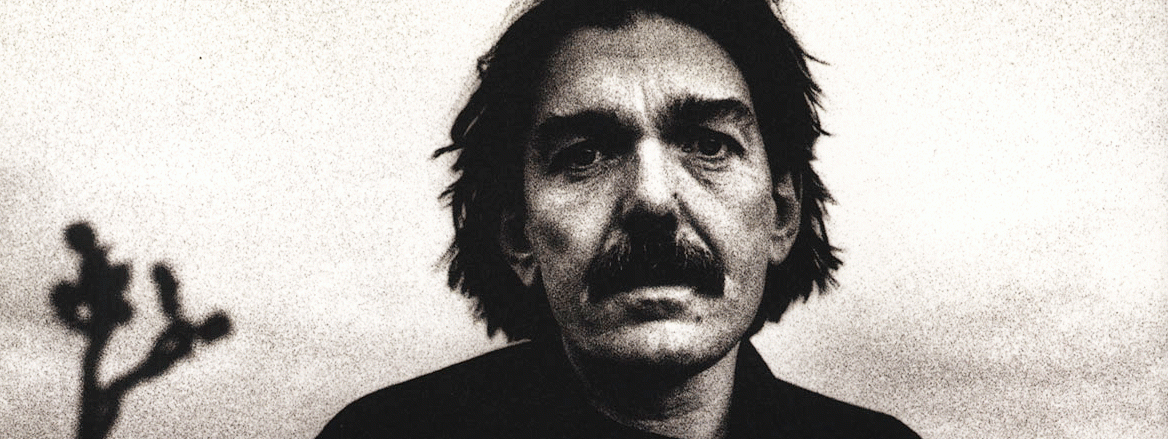30 years ago Don van Vliet and his friend Frank Zappa wrote a film script and accompanying sound-track with the title Captain Beefheart Meets the Grunt People. Although aspects of the sound-track were recorded the film never materialised but the name and persona of Captain Beefheart was adopted by Don Van Vliet to launch an extraordinarily fertile and innovative assault on popular music preconceptions of the ‘6os and ‘70s. When the rest of the musical world were harmonising about love and peace, the records Safe as Milk, Trout Mask Replica, and Lick My Decals Off Baby provided a complete departure from all previous notions of musical coherence and acceptability through the fusion of three distinct elements: the vocal and rhythmic style of urban blues practitioners such as Howlin’ Wolf and Jimmy Read; free form jazz of such as Coleman Hawkins and Cecil Taylor in which the traditional popular precept of there being only one lead instrument at any one time is radically subverted; and finally the astonishingly febrile imagination, personality and vocal presence of Don Van Vliet. These three records stand as landmarks of psychedelic extremism and, in retrospect can be seen as musical counterpoints to the American abstract expressionist tradition of the previous generation. Charles Olsen’s declaration of his poetry as being an ‘open field of energy’ and the mark-making techniques of such as Pollock and Krasner to create a total expanse of image integrally incorporating extremes of texture all have resonances in Van Vliet’s ability to unite discordant musical, literary and visionary elements to create a unsettling whole.
Contractual and production complications caused Van V1iet’s musical career to stutter somewhat in the ‘70s, and although he eventually re-emerged in the early ’80s to startle a new post-punk generation with the bleak minimalism of the records Doc at The Radar Station and Ice Cream for Crow, he had by then already settled on fine art as being the most suitable way of directly articulating his unique vision and interpreting his interior landscape. The preoccupations remain the same but the means of expression are more absolutely personal and hence more satisfactory as a creative vehicle. Those approaching Van Vliet’s work for the first time may well be puzzled and struggle to make sense of what seem an inchoate set of colour splashes, frenzied brushmarks and scratches freely applied and occasional soft washes. The struggle becomes less arduous when his art is assessed in relation to his profound sense of place and natural environment, his intuitive and highly emotional creative spirit and, above all, to his playfulness and delight in free association and absurdist wordplay. Van Vliet has often claimed that two of his favourite painters are van Gogh and Franz Kline and Van Vliet’s use of colour, distortion and intense brush and textural variations to impart a vivid and primordial emotional force certainly has parallels in the work of these two very different predecessors. For many years Van Vliet lived in the Mohave Desert before moving more recently to the Northern Californian coast and his palette, with its heavy greens, blues and ochres, is entirely reminiscent of the landscape he inhabits and his concerns for that environment, while his strong use of thick washes of black and white serve to delineate his own interior sensibilities. Finally, in much of his work, there is a puckish sense of humour at play driven by his fondness for word association and absurdity. In earlier works such as Cats Got His Tail (1985) the humour is blatant but more recent works such as Circles Don’t Fly They Float, 1990) show a more satisfactory unification of his various creative processes, the picture making manifest and tangible the thought that prompted the title which in itself is a line from a poem made into a song.
This exhibition celebrates the development of a singular and uncompromising contributor to the post-war artistic spirit and has been co-ordinated for Brighton Museum & Art Gallery by David Breuer in collaboration with the Michael Werner Gallery of Cologne and New York. Exhibitions Officer: Nicola Coleby. Assistant Exhibitions Officer: Louise Tythacott.
– Jessica Rutherford, Head of Museums and Director of the Royal Pavilion, Brighton
